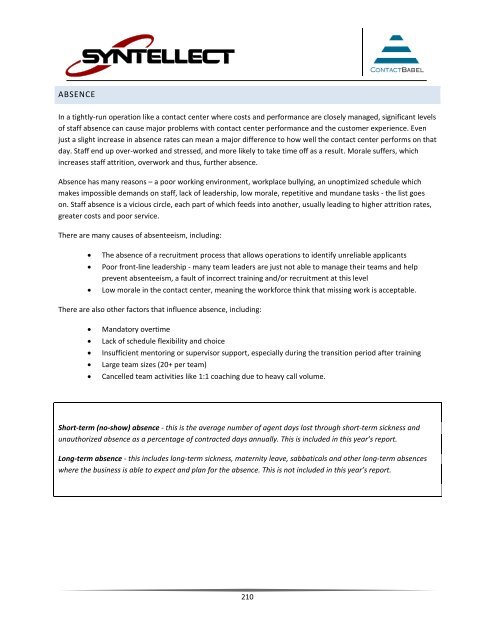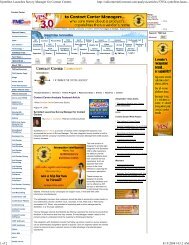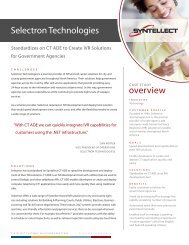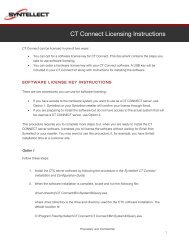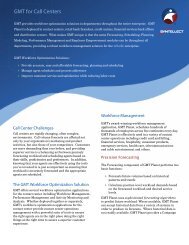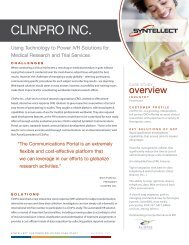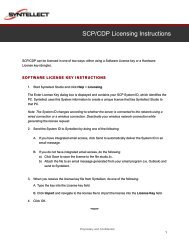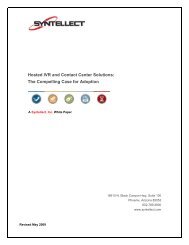2011_ContactBabel - Syntellect
2011_ContactBabel - Syntellect
2011_ContactBabel - Syntellect
Create successful ePaper yourself
Turn your PDF publications into a flip-book with our unique Google optimized e-Paper software.
ABSENCE<br />
In a tightly-run operation like a contact center where costs and performance are closely managed, significant levels<br />
of staff absence can cause major problems with contact center performance and the customer experience. Even<br />
just a slight increase in absence rates can mean a major difference to how well the contact center performs on that<br />
day. Staff end up over-worked and stressed, and more likely to take time off as a result. Morale suffers, which<br />
increases staff attrition, overwork and thus, further absence.<br />
Absence has many reasons – a poor working environment, workplace bullying, an unoptimized schedule which<br />
makes impossible demands on staff, lack of leadership, low morale, repetitive and mundane tasks - the list goes<br />
on. Staff absence is a vicious circle, each part of which feeds into another, usually leading to higher attrition rates,<br />
greater costs and poor service.<br />
There are many causes of absenteeism, including:<br />
• The absence of a recruitment process that allows operations to identify unreliable applicants<br />
• Poor front-line leadership - many team leaders are just not able to manage their teams and help<br />
prevent absenteeism, a fault of incorrect training and/or recruitment at this level<br />
• Low morale in the contact center, meaning the workforce think that missing work is acceptable.<br />
There are also other factors that influence absence, including:<br />
• Mandatory overtime<br />
• Lack of schedule flexibility and choice<br />
• Insufficient mentoring or supervisor support, especially during the transition period after training<br />
• Large team sizes (20+ per team)<br />
• Cancelled team activities like 1:1 coaching due to heavy call volume.<br />
Short-term (no-show) absence - this is the average number of agent days lost through short-term sickness and<br />
unauthorized absence as a percentage of contracted days annually. This is included in this year’s report.<br />
Long-term absence - this includes long-term sickness, maternity leave, sabbaticals and other long-term absences<br />
where the business is able to expect and plan for the absence. This is not included in this year’s report.<br />
210


